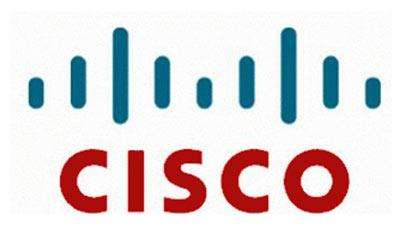Troubleshooting is a very important part of Cisco certification exam. Network fault diagnosis, starting from the fault phenomenon, using the network diagnostic tool as a means to obtain diagnostic information, determine the network fault point, find the root cause of the problem, eliminate the fault, and restore the normal operation of the network. Network failure usually has the following possibilities: physical device interconnection failure in the physical layer or hardware and line itself; interface configuration problem of the network device at the data link layer; network layer network protocol configuration or operation error; Performance or communication congestion issues; upper three layers or network application errors. The process of diagnosing a network failure should proceed from the physical layer up the OSI seven-layer model. First, check the physical layer, then check the data link layer, and so on, try to determine the point of failure of the communication failure until the system communication is normal.
Network diagnostics can use a variety of tools: router diagnostic commands, network management tools, and other troubleshooting tools including LAN or WAN analyzers. Looking at the routing table is a good way to start looking for network failures. ICMP's ping, trace commands, and Cisco's show and debug commands are network tools for getting useful information about troubleshooting. How to monitor the running details and faults of the network under normal conditions, and what content to monitor? Information about each interface to be checked can be obtained very easily with the show interface command. The show buffer command provides a periodic display of buffer size, usage, and usage. The show procs command and the show proc mem command can be used to track processor and memory usage. These data can be collected periodically for diagnostic reference when a fault occurs.
Troubleshooting steps:
The first step is to first determine the specific phenomenon of the fault and analyze the type of cause of the fault phenomenon. For example, the host does not respond to customer request services. Possible causes of failure are host configuration issues, interface card failures, or loss of router configuration commands.
The second step is to collect the information needed to help isolate the cause of the possible failure. Collect useful information from network management systems, protocol analysis traces, output reports from router diagnostic commands, or software manuals.
In the third step, consider the possible causes of the failure based on the collected conditions and eliminate some of the causes of the failure. For example, based on some information, you can troubleshoot hardware and focus on the software.
The fourth step is to establish a diagnostic plan based on the last possible cause of the malfunction. Start with only one of the most likely causes of the fault, so that it is easy to recover to the original state of the fault. If you consider multiple failures causes at the same time, it is much more difficult to try to return to the original state of the fault.
The fifth step is to execute the diagnosis plan, carefully test each step and observe each step, and confirm the result every time you change one parameter. The results of the analysis determine if the problem is resolved, and if not resolved, continue until the failure phenomenon disappears.
Network layered diagnostic technology
The fault of the physical layer is mainly reflected in whether the physical connection mode of the device is appropriate; whether the connection cable is correct; whether the configuration and operation of the modem, CSU/DSU, etc. are correct. The best way to determine if a router port is physically connected is to use the show interface command to check the status of each port, interpret screen output information, and viewport status, protocol setup status, and EIA status.
To find and troubleshoot the data link layer, you need to check the configuration of the router and check the encapsulation of the same data link layer shared by the connected ports. Each pair of interfaces has the same package as the other devices with which it communicates. Check the encapsulation by looking at the configuration of the router, or use the show command to check the encapsulation of the corresponding interface.
The basic way to troubleshoot network layer failures is to: View the router routing table along the path from the source to the destination, and check the IP address of the router interface. If the route does not appear in the routing table, you should check to see if you have entered the appropriate static route, default route, or dynamic route. Then manually configure some lost routes, or troubleshoot some dynamic routing processes, including failures in RIP or IGRP routing protocols. For example, for IGRP routing, the selection information only exchanges data between systems of the same autonomous system number (AS) and checks the matching of the autonomous system numbers configured by the router.

 Join Telegram Study Group ▷
Join Telegram Study Group ▷














